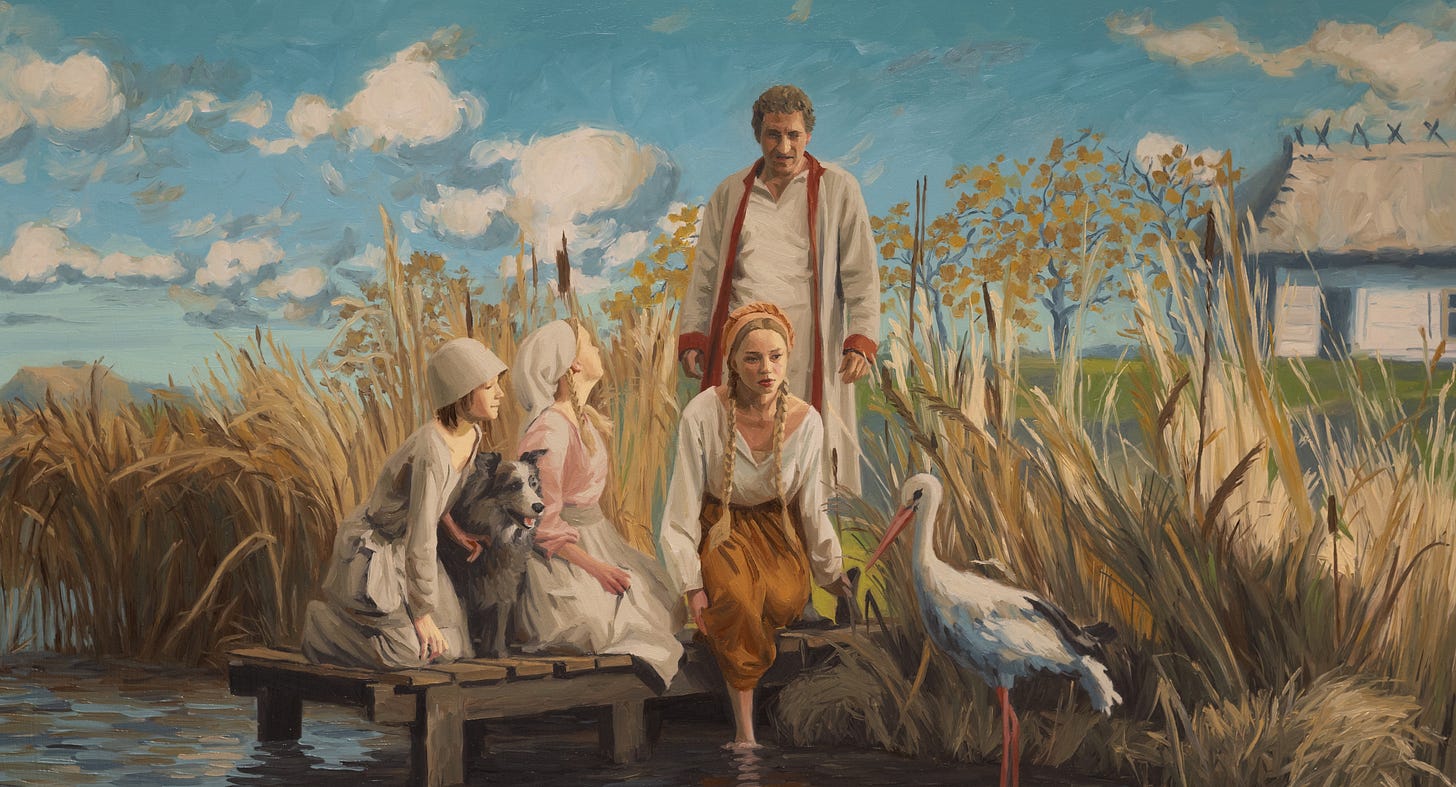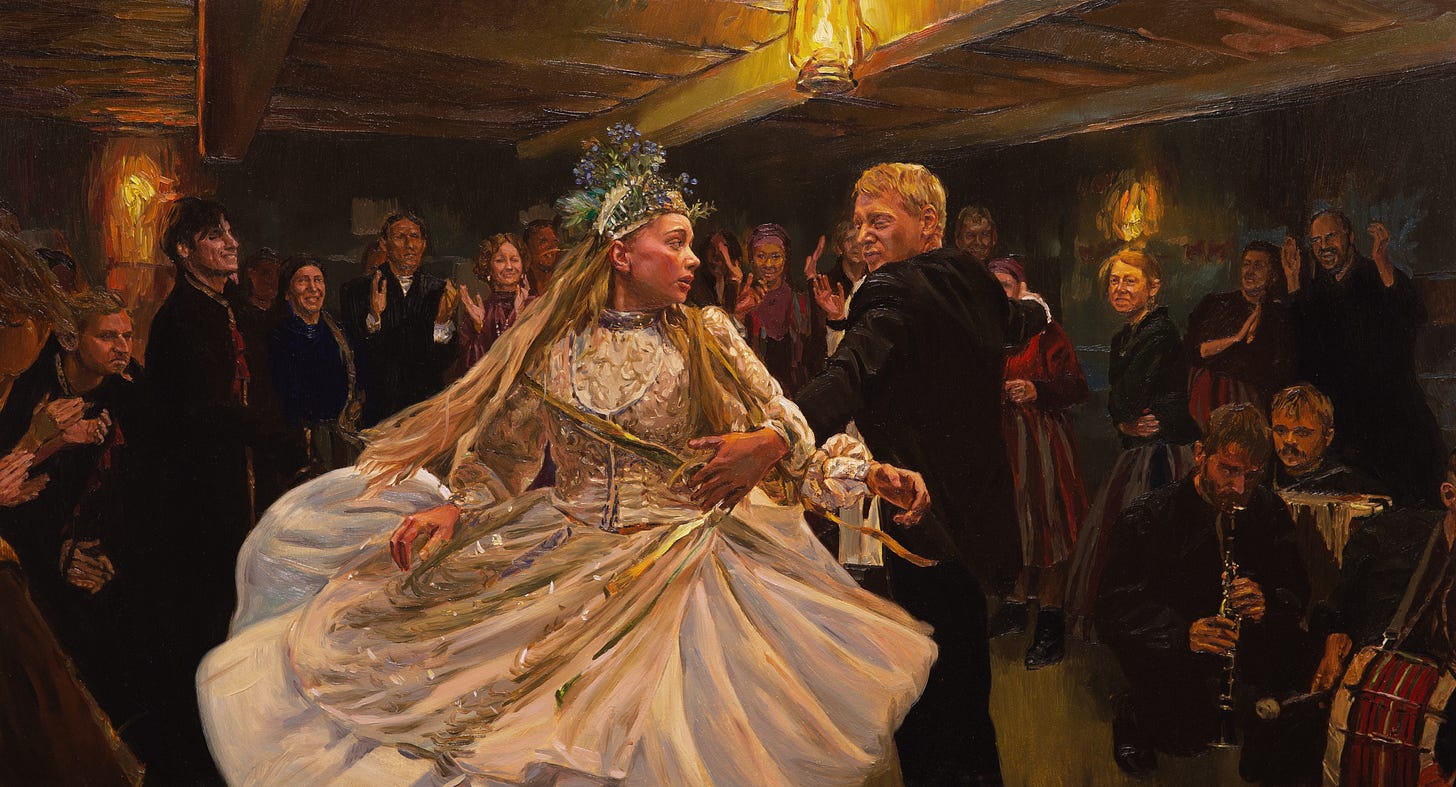‘The Peasants’ turns bleak drama into a living oil painting. Why?
‘Loving Vincent’ filmmakers paint themselves into a corner with new drama.
(Photos courtesy of Sony Pictures Classics)
If you saw the 2017 documentary “Loving Vincent,” you were likely mesmerized as I was by filmmakers Dorota Kobiela and Hugh Welchman’s approach to bringing the works of Vincent Van Gogh to life. Literally.
Over 100 animators spent seven years handpainting every one of the film’s 140,000 frames, so that the thick, luscious brushstrokes of “Starry Night” swirled before our eyes, or the camera took us inside several of Van Gogh’s paintings to hear from the characters. It was a stunning visual achievement.
Now, the Polish husband-and-wife filmmakers are back with “The Peasants,” an adaptation of a mammoth 1904 Polish novel about a young woman fighting the patriarchy in a remote 19th-century village. This time, Kobiela and Welchman shot a live-action version of the film using real actors, then handed the footage over to animators to turn the frames into paintings.
The question is: why?
“The Peasants” is undeniably pretty to look at, especially more abstract images of dancing waves of grain in the fields, or rain pattering down on a muddy road. But most of the film is, frankly, two people talking in a room. How much does animation really enhance that? Watching the film, I felt bad for the artist who got stuck painting a two-shot of a conversation while the guy next to him got to paint one of those fields of grain.
It doesn’t help that the story of “The Peasants” is pretty rote and melodramatic. A beautiful young woman named Jagna (Kamila Urzedowska) is beset by false gossip in the village from jealous women and lustful men that she’s promiscuous. In fact, the film presents her as an almost saintly figure, an artist and an animal lover.
Jagna’s parents force her to marry a wealthy landowner Maciej (Miroslaw Baka), in order to increase the family’s wealth and status in the community. But Jagna is carrying on an affair with Maciej’s married son Antek (Robert Gulaczyk). When the deception is found out and tragedy occurs, the townspeople turn on Jagna.
There are some scenes that benefit from the animation, such as the whirling chaos of the wedding scene. And the animators do capture the subtleties of the performances, such as Urzedowska’s frightened eyes in the midst of that wedding.
But the animation, a medium which usually transcends the limitations of live action, is so limited by what was shot that “The Peasants” quickly loses its novelty.
And is luscious oil paint really the right medium to use to depict the venality and hatred of a small village? I kept thinking of Michael Haneke’s “The White Ribbon,” which laid out the bigotry of a small village in pitiless black and white.
Here, the media doesn’t fit the message. While “The Peasants” may be rich in visuals, it ends up being poor in drama.
“The Peasants” is now playing in movie theaters. In Madison, it opens today at AMC Fitchburg 18.




